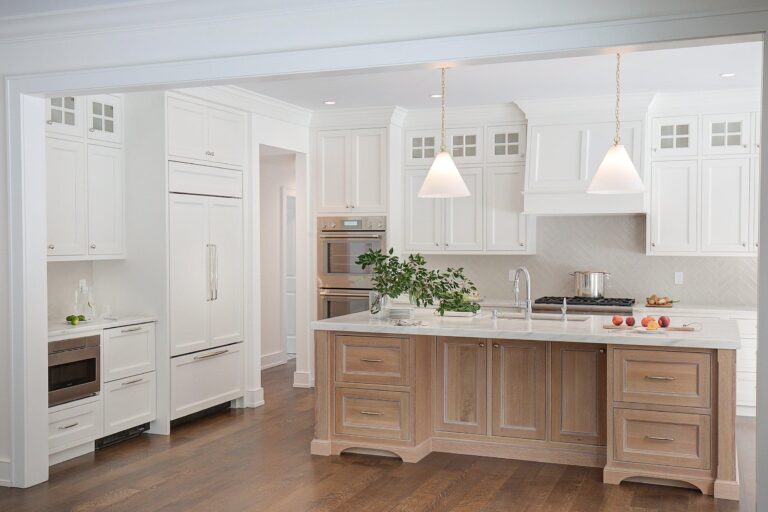As the United States implements new tariffs on imported goods, kitchen cabinet manufacturers are cautiously optimistic that these trade measures will bolster the domestic industry over time. Companies in the sector hope that increased costs on foreign cabinets and materials will encourage consumers and builders to turn to American-made products, potentially leading to growth and job creation. However, the impact of these tariffs remains a subject of debate, with concerns about possible price hikes for homeowners and delays in construction projects. This article explores how kitchen cabinet companies are navigating the evolving trade landscape and their expectations for the long-term effects of the recent tariff policies.
Economic Impact of New US Tariffs on Kitchen Cabinet Industry
New tariffs imposed by the US government are reshaping the financial landscape for the kitchen cabinet industry in complex ways. While some companies face immediate cost pressures due to increased import duties on raw materials and finished goods, many manufacturers remain cautiously optimistic about long-term benefits. The tariffs are expected to encourage domestic production, reduce reliance on foreign suppliers, and potentially create new jobs within the sector. Industry leaders emphasize that initial price hikes may be offset over time by strengthened local supply chains and enhanced innovation.
Key economic factors affected by the tariffs include:
- Increased production costs for imported materials such as plywood and hardware
- Potential boost in demand for US-made cabinetry products
- Fluctuations in consumer prices impacting home renovation budgets
- Adjustment periods necessary for small and mid-sized manufacturers to adapt
| Impact Area | Short-Term Effect | Long-Term Outlook |
|---|---|---|
| Raw Material Costs | Up 15-20% | Stabilization through local sourcing |
| Consumer Prices | Increase of 5-10% | Possible normalization as supply chain adjusts |
| Employment | Temporary disruptions | Growth in manufacturing jobs |
Challenges and Opportunities for Domestic Manufacturers
Domestic manufacturers are navigating a complex landscape shaped by the newly imposed US tariffs on imported kitchen cabinets. While these levies aim to bolster local production by increasing the cost of foreign goods, they also introduce several hurdles. Companies face rising material costs and logistical challenges as supply chains adjust. Smaller manufacturers, in particular, struggle with cash flow constraints necessary to scale operations quickly and meet heightened demand. However, the tariffs also provide a much-needed cushion against overseas competition, allowing domestic brands to invest in innovation and expand their workforce.
Opportunities emerging from this new trade environment include:
- Revitalization of U.S.-based manufacturing plants
- Greater focus on sustainable and locally sourced materials
- Potential for higher quality standards and custom designs
- Job creation across production and supply chain sectors
| Challenge | Opportunity |
|---|---|
| Supply chain delays | Boost in domestic material sourcing |
| Increased production costs | Higher product margins and reinvestment potential |
| Scaling operations quickly | Expansion of skilled labor and manufacturing technology |
Consumer Price Expectations and Market Adjustments
Market reactions to the newly implemented tariffs have been mixed, with consumers adjusting their spending habits in anticipation of higher prices. According to recent surveys, a significant portion of households now expect kitchen cabinet prices to rise by 5% to 10% over the next year. This sentiment has led some buyers to accelerate purchases, while others are delaying renovations, hoping for more stable pricing down the line. Retailers and distributors are also recalibrating their inventory strategies to manage supply chain disruptions caused by the tariffs.
Industry experts warn that these shifts in consumer price expectations could prompt broader market adjustments beyond just cabinetry. Key factors influencing the landscape include:
- Raw material costs: Tariff impacts on imported wood and metal components.
- Manufacturing delays: Extended lead times as suppliers adapt to new trade regulations.
- Competitive pricing: Domestic manufacturers leveraging tariffs to increase market share.
| Factor | Impact | Consumer Effect |
|---|---|---|
| Tariff Implementation | +8% cost increase | Price hikes expected |
| Supply Chain | Delays up to 3 weeks | Longer wait times |
| Domestic Production | Market share +15% | More local options |
Long-Term Strategies for Competitiveness in a Tariff-Heavy Environment
Companies in the kitchen cabinet industry are actively reshaping their business models to withstand the financial pressures imposed by recent tariffs. Many are investing in domestic manufacturing capabilities to reduce reliance on imported materials, which often come with steep tariff costs. This shift not only curtails expenses over time but also aligns with growing consumer demand for locally made products. Additionally, firms are embedding advanced automation technologies within their production lines, heightening efficiency and meeting delivery deadlines more effectively.
To maintain a competitive edge, businesses are also diversifying their supply chains beyond traditional sources. Strategies include sourcing raw materials from countries not affected by tariffs and forging closer partnerships with suppliers to negotiate better terms. Below is a concise overview of key long-term strategies adopted:
- Investment in automation: Enhanced production speed and consistency
- Expansion of domestic facilities: Mitigating tariff impacts
- Supply chain diversification: Reducing dependency on tariff-exposed regions
- Focus on product innovation: Differentiation in a competitive market
| Strategy | Expected Benefit | Timeframe |
|---|---|---|
| Domestic Manufacturing Expansion | Lower tariff exposure | 3-5 years |
| Automation Investment | Increased production efficiency | 1-3 years |
| Supply Chain Diversification | Risk mitigation | 2-4 years |
| Product Innovation | Market differentiation | Ongoing |
Key Takeaways
As the new US tariffs on imported kitchen cabinets take effect, industry leaders remain cautiously optimistic that the measures will ultimately strengthen domestic manufacturing and protect American jobs. While some companies brace for short-term cost challenges, many hope that the long-term benefits—including increased investment and a more resilient supply chain—will outweigh the initial adjustments. The coming months will be critical in determining whether these tariffs deliver on their promise to reshape the kitchen cabinet market in favor of US producers. ABC News will continue to monitor developments and provide updates on how this evolving trade policy impacts businesses and consumers alike.




